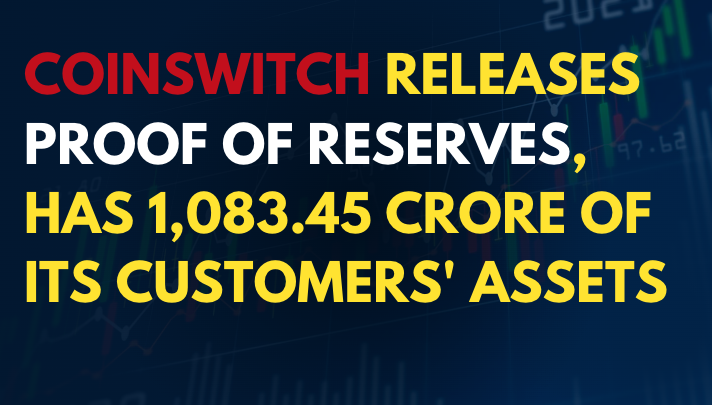The company published its proof of reserves analysis in an effort to provide transparency for its users. It is supported by some of the top investors in the world, including Tiger Global, Andreesen Horowitz (a16z), and Sequoia Capital. The firm possessed more assets as compared to holdings of its members on its platforms, according to the study by financial auditor INMACS, and it had not loaned from or reinvested into any of the crypto assets of its customers.
The study claims that compared to what its customers have on its site, CoinSwitch holds 7.21 times more wealth in rupees. For every bitcoin (BTC) that one of its users owns, CoinSwitch currently owns 1.71 BTC.
The custodial wallets of CoinSwitch are where 85% of the users’ cryptocurrency assets are kept, with the remainder 15% being housed on other exchanges like Binance, WazirX, CoinDCX, and CoinSwitchX. The audit of holdings as well as balances that was completed on November 4 forms the foundation for the report. Users can validate the company’s claims because it revealed the address of its main wallets on Friday.
The corporation had assets in these wallets valued at around Rs 933.83 crore as of January 6, 2023. It held for 86.2% of all user assets under its custody just at the time of review. On other platforms, including WazirX, CoinDCX, and Binance, the remaining assets, valued at Rs 149.62 crore, are stored.
After investors withdrew billions of dollars from the crypto market, there was a significant decline in trading volume on international crypto exchanges. Users withdrew considerable sums from assets tied to cryptocurrencies as a consequence of the failure of FTX, the second-largest cryptocurrency exchange in the world, as well as its native token FTT and sibling trading company Alameda Research. According to CoinSwitch, it had no exposure to FTX.
Read More: Binance Withdrawals Surge Amidst Reports of Red Flags in Binance Proof of reserves Audit
In response to growing challenges in the cryptocurrency market, CoinSwitch recently expanded its solution portfolio by adding seven additional products, including equities, bonds, fixed deposits, exchange-traded funds (ETFs), as well as mutual funds.

